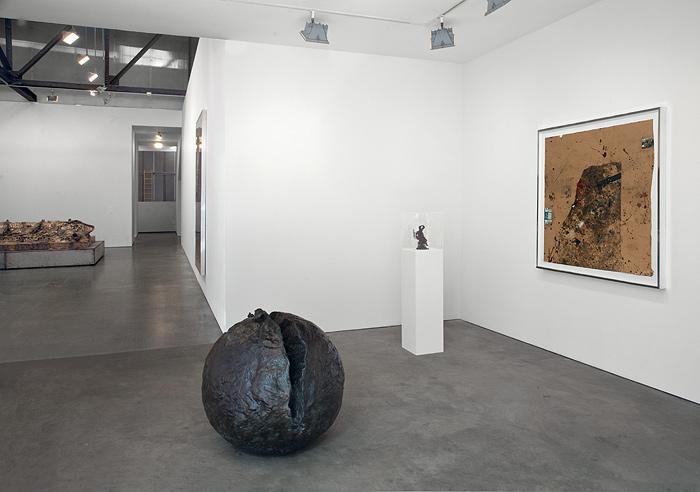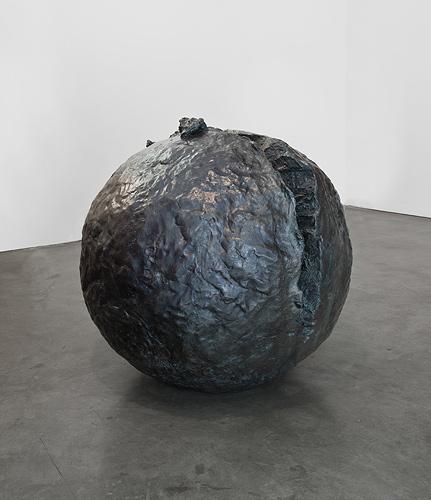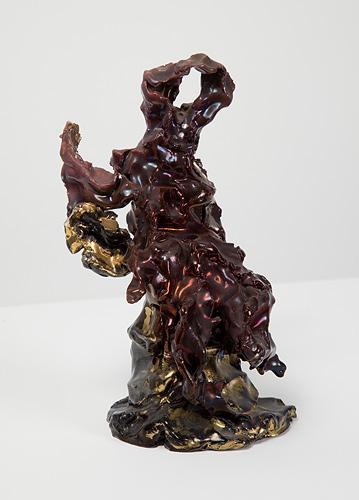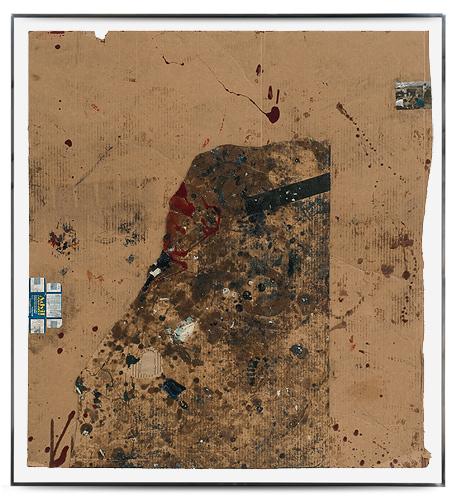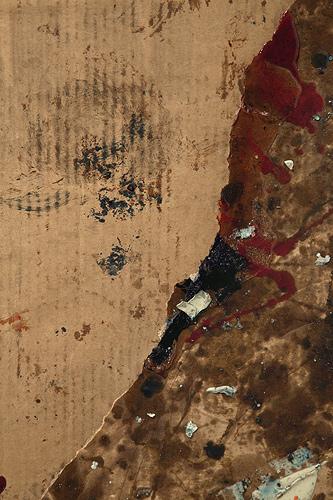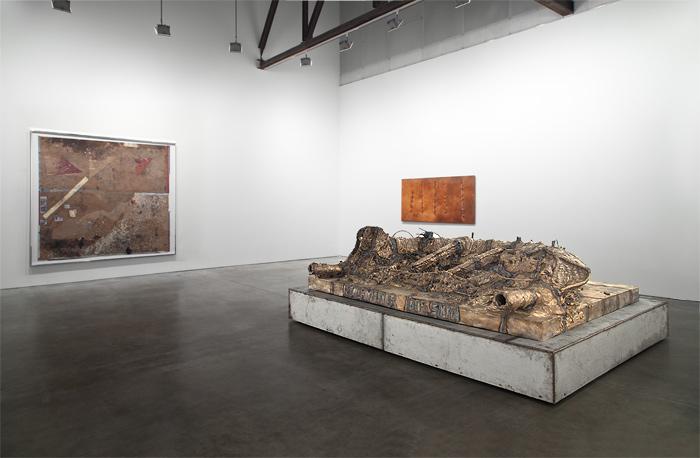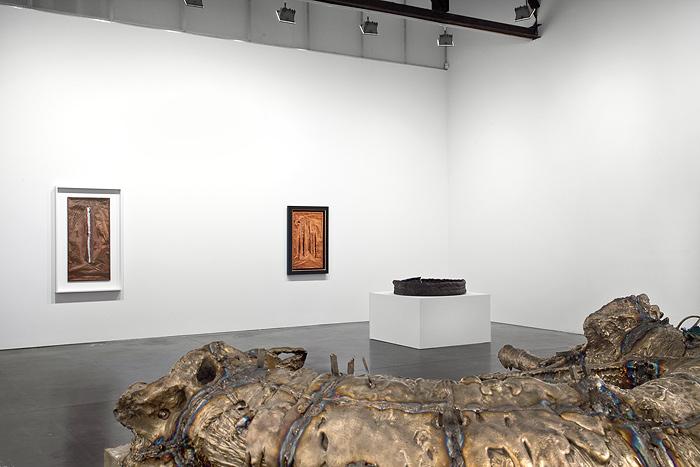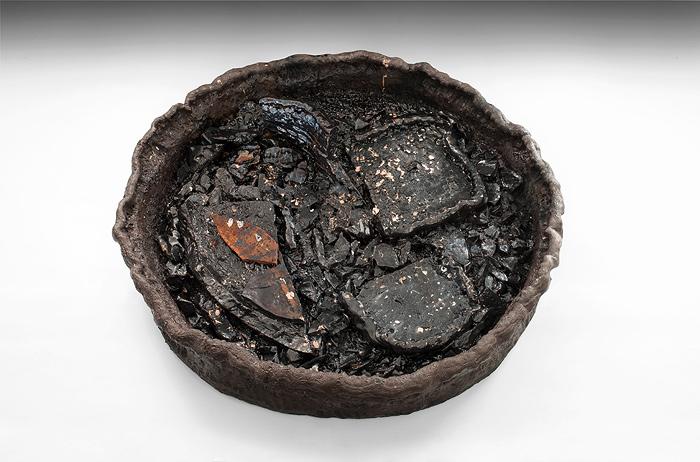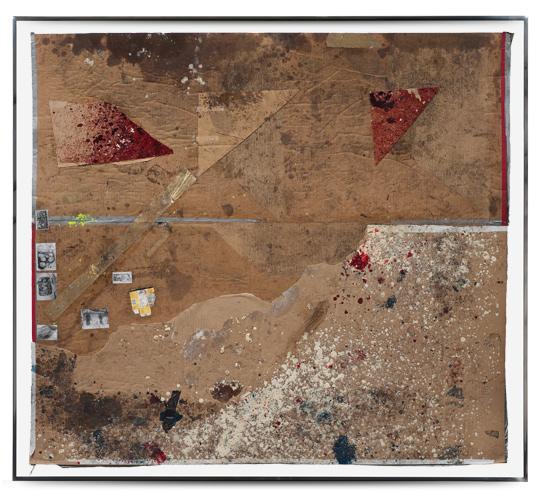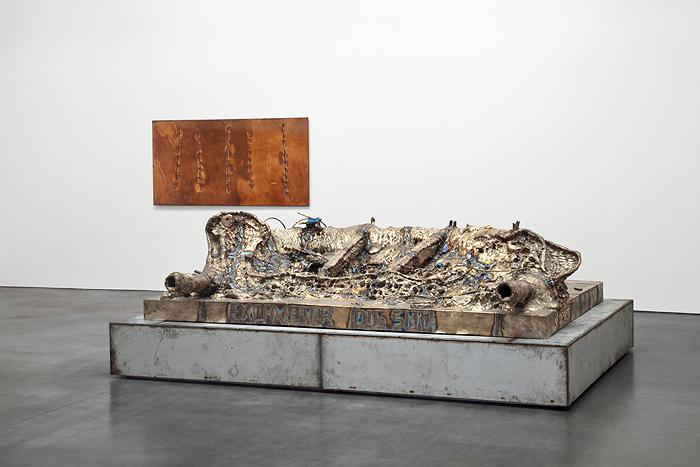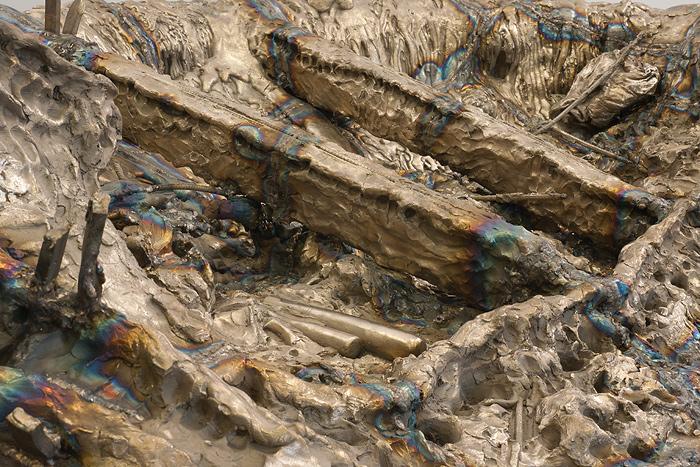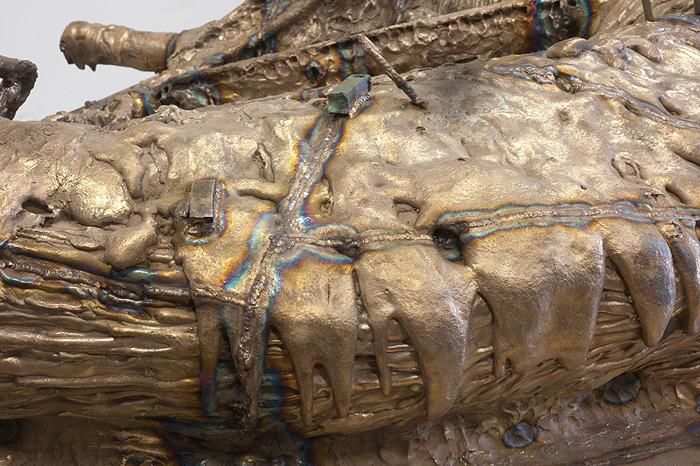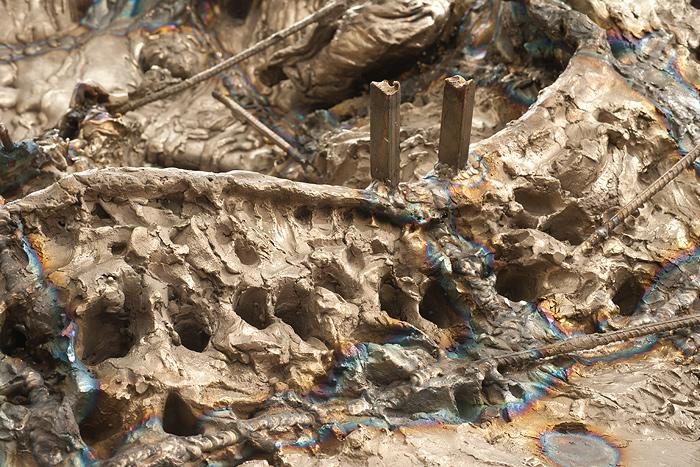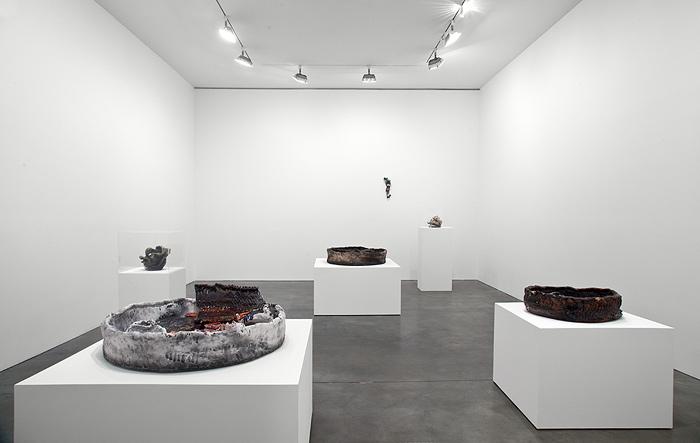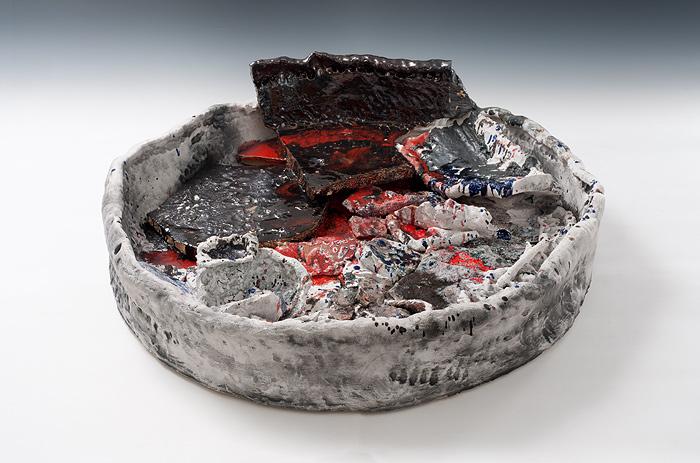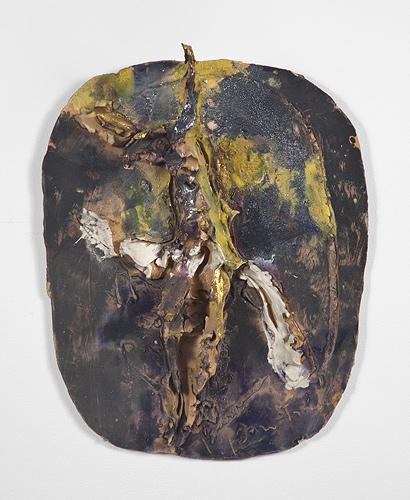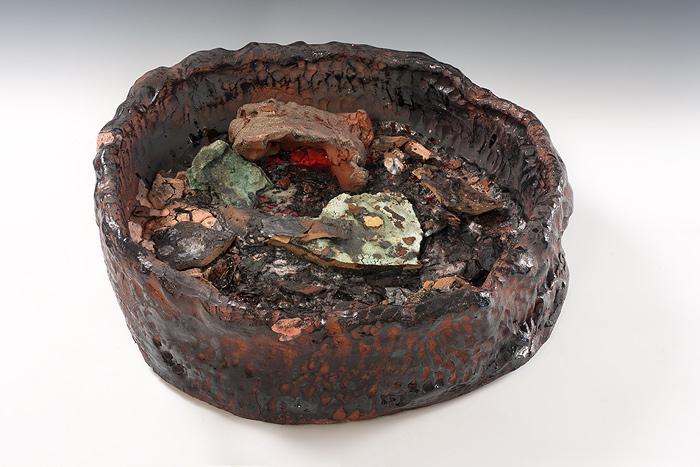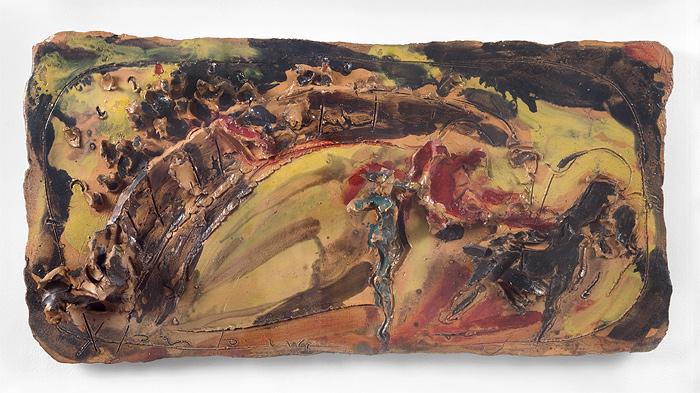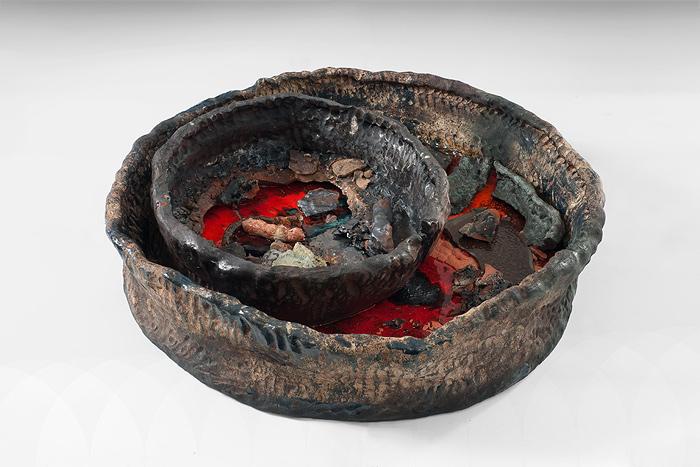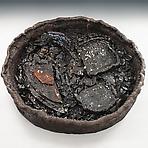Sterling Ruby Lucio Fontana
September 10 – October 22, 2011
Main Gallery
Opening reception: Friday September 9, 6-8 p.m.
The exhibition continues in Gallery 2
Andrea Rosen Gallery is delighted to present a two-part exhibition intertwining the work of Sterling Ruby and Lucio Fontana. The show is both extraordinarily elegant and at the same time violent and disruptive. The works for the exhibition have been very specifically chosen both to inspire the audience to see each artist in a new light; and to accentuate in each artist's work how the specificity of the materials used alter the making as well as the content.
The juxtapositions are both overt: the second part of the exhibition concentrates on Fontana ceramics and Ruby ceramics; and more subtle: the first two rooms of the exhibition intertwine bronze works by both artists, each of which shares a rare ability to simultaneously expose the significance of both the material from which the work was molded, with equal emphasis on the intrinsic nature of bronze as essential to the work's perception. The first two spaces also contain wall bound works by both artists. Fontana is represented by three extremely significant copper works from 1962 that so viscerally expose how the material dictates the nature of the slash. In seeing these works, one immediately re-orients themselves to Fontana's process. As artists become more historically significant there seems to be a strange reversal; we tend to condense our notion of their significance into one particular idea. These copper works re-open our eyes not only to their aggression but to the fact that these works are landscapes, portraits of skyscrapers, and remnants of the artist's action, which is exactly what ties these two artists together. So much of Ruby's work is about the remnants of what seems to be destroyed or the remnants of one act manifesting into a wholly new form. In Ruby's work there is a fluidity that becomes truncated and frozen.
As significant as process is in both of their works, there is a potential assumption that the artists were dictated by the process, but what also ties these artists together is their sophistication; to be able to simultaneously make physical process decisions and make very specific aesthetic decisions. So while there is a deep interest in the nature of the material, and the limitation of the material, and the creation and destruction of the material, there is also an overriding ability to control amazing aesthetic determinations. Where for instance the "EXHM" [Exhumation] collages by Ruby appear to be remnants of debris from other bodies of work, and there is no sign of where controlled intervention overlaps with found material, it's evident that both are clearly present.
While there is a presence of ceramics in the two front rooms, one piece by each artist beginning to create these further links and connections, the third space is entirely dedicated to this relationship. In choosing the Fontana ceramics, each was carefully selected for its earthy color tones, clarity of its gesture and how while all his ceramic works are figurative in nature, these were chosen for their ability to transform into abstraction. The ceramics are some of the most exploratory and fundamental works for both artists and share a sense of aggression in their loose, raw forms. Ruby's ceramics create their own history. Fontana relished the immediacy and fluidity of clay, which he studied during his education in the late 1930s at the Sèvres factory, a manufacturer of high-end porcelain for the French royals. These daring ceramics were often described for their raw nature of clay that was still attached to a slab of earth, (like the figures wrestling free from the ceramic slab in Corrida, 1950-1955) and were self-described as embodying the energy of a "motionless earthquake." For Ruby, the "Basin Theology" ceramics are both hot and cold, psychological and sensual, yet coolly abstract at the same time. Each piece is made of recycled fragments of earlier destroyed or damaged works that are layer by layer, by repeated kiln firing, re-integrated through that allegory. Each piece is then fired up to ten times and can spend days at a time in the kiln. While basins are traditionally man-made or natural containers for water, Ruby's basins seem more like the charred, fossilized remains from an unknown archaeological site, but through their colors and amorphous terrain seem also alive and hyper-sexualized. As Ruby explains,
"I am smashing all of my previous attempts, and futile, contemporary gestures, and placing them into a mortar, and grinding them down with a blunt pestle. I am doing this as a way of releasing certain guilt. If I put all of these remnants into a basin, and it gets taken away from me, then I am no longer responsible for all my misdirected efforts. I will no longer have to be burdened with the heaviness of this realization."*
Ruby's description goes far to illuminate his own central work of the exhibition the bronze, "EXCAVATOR DIG SITE." Much of the joy of discovery in this work is found hidden in interior "in-between" spaces, in the cracks and crevices, and the scattered attempt to identify and piece together individual parts. This central idea seems to be the key to the exhibition.
Sterling Ruby (b. 1972 in Bitburg Germany) lives and works Los Angeles, CA. His solo museum exhibitions include "Supermax," Museum of Contemporary Art, Los Angeles (2008), "CHRON," Drawing Center, New York (2008) and Grid Ripper, Galleria d'Arte Moderna e Contemporanea, Bergamo (2008-2009). His work has been included in group exhibitions such as "New Photography," the Museum of Modern Art, New York (2009), "Dirt on Delight," Institute of Contemporary Art, Philadelphia and the Walker Art Center, Minneapolis (2009), and the Moscow Biennial (2007). Sterling studied at the Pennsylvania School of Art & Design, Lancaster, PA; received a B.A. from the School of the Art Institute of Chicago, and a pending M.A. from the Art Center College of Design, Pasadena, CA. His work can be found in the collections of the MoMA, the Guggenheim, MCA Chicago, LACMA, Armand Hammer Museum, LA MoCA, Tate Modern, Astrup Fearnley Museum of Modern Art, and Contemporary and Modern Art Museum of Trento and Rovereto among others.
Lucio Fontana (1899 – 1968) lived and worked in Argentina and Italy. His first solo exhibition was in 1931. Among others, major retrospectives have been organized by the Guggenheim Venice (2006), Hayward Gallery (1999), Fondazione Lucio Fontana (1999) and the Centre Georges Pompidou (1987). The Fondazione Lucio Fontana maintains the archives and Estate of the Artist. Enrico Crispolti and Skira published an updated edition of his catalogue raisonné in 2006.
For more information and images, please contact Jessica Eckert, j.eckert@rosengallery.com, or Renee Reyes, r.reyes@rosengallery.com.
* From the essay "American Perspectives" by Sterling Ruby. Permanent Mimesis: An Exhibition about Simulation and Realism. (exhibition catalogue). Italy: Electa Mondadori, 2010.
